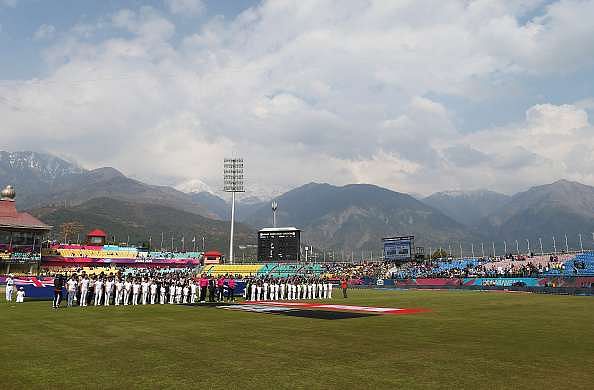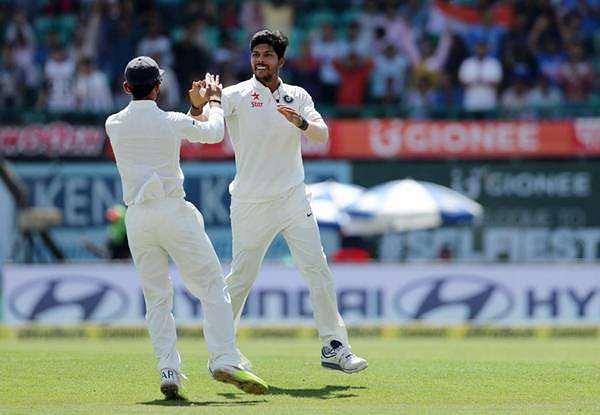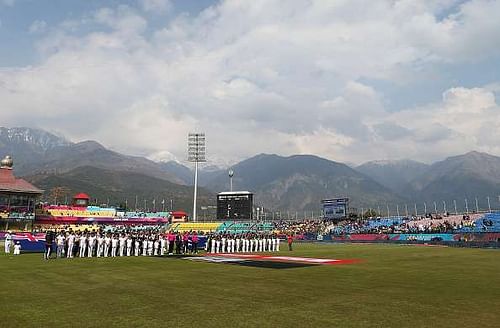
Dharamsala: The cricket pitch an Indian fan deserved
The beauty of cricket lies in the fact that unlike in other popular sports like football and basketball, the surface matters a lot. Even in tennis, surfaces change from hard court to clay court to grass court. But in cricket, that change is even more drastic and one can never be a hundred percent sure.
Add to that the complexity of a Test match, across five days, and we have an altogether different monster. The number of factors which can affect the pitch and the way it behaves is mind-boggling. The weather, the watering, how hard the sun is beating on it, the overcast conditions, the amount of grass left and last, but not the least, the spikes of the bowlers that leave footmarks on the surface to be exploited by spinners – the number of variants gives cricket a dimension that cannot be replicated in any other sports.
The BCCI gamble
India has been extraordinarily generous this season by introducing several new venues. In the series against Australia, three out of the four – Pune, Ranchi and Dharamshala were hosting their inaugural Test. While the Pune pitch disappointed with ample turn from the first ball, backfiring on India; the Ranchi pitch was a googly. It looked scary dark but produced the most batting-friendly pitch of the tour – leading to a draw.
Not that it was lifeless; the Ranchi pitch had something for the bowlers as well as the batsmen, which is how Test pitches should be. It, however, just didn’t break enough on Day 5 and some good batting saved the day for the visitors.
The HPCA Stadium in Dharamsala offered the best pitch of the season in terms of the way it played. The BCCI’s gamble seemed to have paid off, although an argument could be made that new venues cancel out part of the ‘home advantage’ because even the home team cannot be sure about what to expect.
Related: India's home season 2016-17: All the numbers you need to know
The context of the Dharamsala game
The picturesque locale notwithstanding, Dharamsala, under the Himachal Pradesh Cricket Association, is already a well-respected venue for the IPL matches and international ODIs it has already hosted (remember the monster Dhoni six in the IPL a few years ago?) The ground is imposing given you can view the gorgeous Dhauladhar Mountain Range, the Southern branch of the main Outer Himalayas.
The weather is perfect for a game of cricket, especially when the sun shines bright like it did for the fourth Test. The stage was perfectly set too, given it was the series decider, India and Australia tied at 1-1 after three Tests. That was a risky proposition as a defeat meant India wouldn’t be able to wrest the Border – Gavaskar trophy that was held by the Australians. It could also have been a dampener after what was a spectacular home season that consisted of 13 Tests, out of which India had already won nine and drawn two, losing only one.
The WACA pitch at Dharamsala
Although there was an inkling of what to expect at Dharamsala, it was a pleasant surprise for everyone. Chief curator at HPCA, Sunil Chauhan had mentioned about how the pitch will test the quality of the batsmen, given he left some grass and was expecting the strip to be fast and bouncy. In India, fast and bouncy rarely evokes the image of the ‘fast and bouncy’ one encounters at Johannesburg or Perth.
But come Day 3 and the Australian batsmen, even someone with the height of Matt Renshaw were seen hopping all over the place to Umesh Yadav’s 140kph short-balls. David Warner was hit on the crest by Bhuvaneshwar Kumar. That is when the world stood up and took notice. On hindsight, it could be said, Australia frittered away a valuable opportunity of winning a rare series in India.
Dharamsala was more Australian in its nature than India. In a way, Australia won the toss on a ‘home pitch’ with pace and bounce, with India’s best player of pace and bounce, Virat Kohli, not playing the Test. What more luck could they have asked for?
What the Dharamsala pitch offered

It had some lateral movement when the ball was delivered with an upright seam. It offered some bounce to spinners like Nathan Lyon who give the ball a real rip and make sure it lands on the seam. It had some bounce when the fast bowlers bend their back and bounce that had some zip like Umesh Yadav and Pat Cummins showed. A lot of balls needed some real acrobatics on the part of Matthew Wade and Wriddhiman Saha to be stopped.
The ball was thudding into their gloves showing how much pace the pitch had. What better sight in cricket than a fast bowler steaming in and delivering a ball that whooshes past the batsman’s nose and thuds into the wicket-keeper’s gloves?
The Dharamsala pitch is the kind of pitch batsmen and viewers and bowlers deserve. If the technique is correct, there is full value for the shots as the ball comes onto the bat nicely – something Rahul and Rahane showed on the fourth day of the match. Rahane’s pull shots were classy and reminded us of what he and Kohli did to Mitchell Johnson when India toured Australia.
The pitch also offered bowlers hope right throughout, without being a landmine like the Pune pitch was. The outfield was lightning fast, offering good value for shots. In the end, we saw how both teams scored in excess of 300 at least once and could’ve scored more if they had shown some patience. We could see, how good bowling could bundle the Aussies out early and yet, how easy it was for the Indians to get those runs once we take the psychological pressure of a big chase out of their heads!
Why more pitches like at Dharamsala are needed?
The Dharamsala pitch made by Sunil Chauhan was the classic Test pitch. It is probably one of the best Test pitches prepared anywhere in the world over the last year. Pitches like these make Test cricket exciting not in a T20 way but in a way, that keeps everyone interested. The bowlers get their due for their hard work and the batsmen get to show their mettle. India can use a pitch like this to train for matches away from home – especially in Australia and South Africa.
The kind of batsmen such pitches will groom will also be better equipped to handle spicy, fast-bowler-friendly tracks which they’ll encounter abroad.
Related: 5 Indian cricketers who improved the most during the home season

